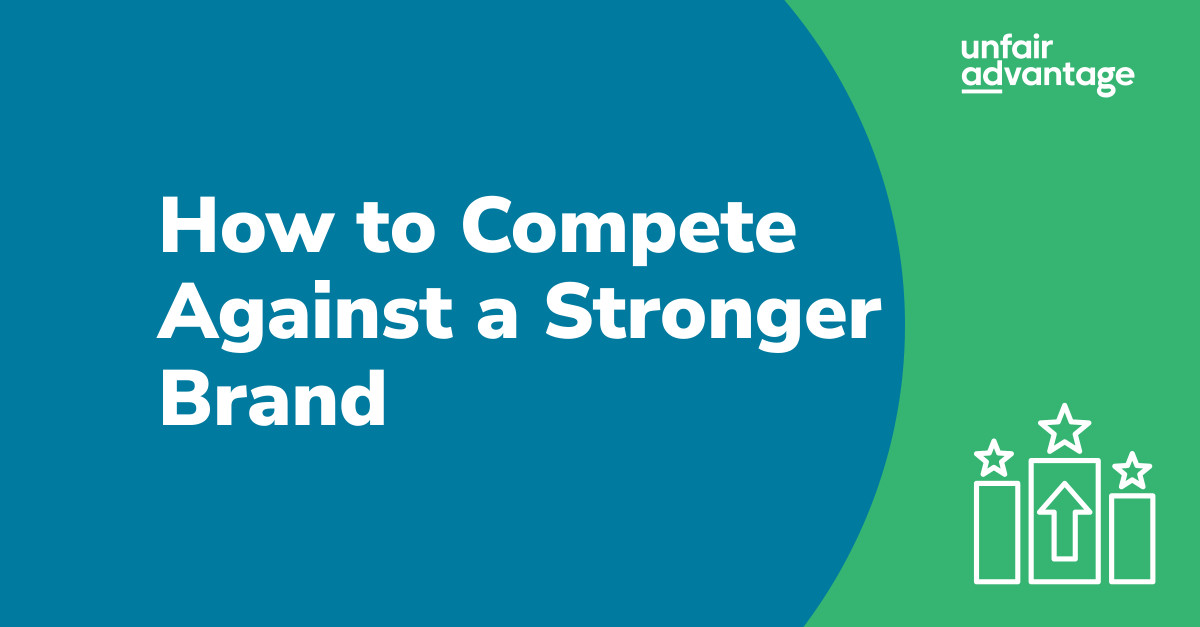
Published in:
Blog
How to Compete Against a Stronger Brand
How can a small business stand out in a market dominated by stronger brands? This is a question many small business owners ask as they seek to carve out their own niche in the competitive landscape. Whether it’s through the meticulous crafting of SEO strategies that build trust over time, leveraging PPC to cut through the noise, optimizing conversion rates to turn clicks into customers, engaging in targeted social media marketing, or analyzing data to continuously refine tactics, small businesses have a suite of tools at their disposal.
Each strategy plays a crucial role in leveling the playing field against larger competitors. Here’s a guide on how you can use SEO, PPC, CRO, SMM, and Analytics to build your brand to compete against the goliaths in your industry.
1. SEO: The Long Game to Earn Trust
Search Engine Optimization (SEO) isn’t just about keywords; it’s about establishing trust with your audience. Start by optimizing your website content for both your audience and search engines. Focus on creating valuable, relevant content that addresses the needs and questions of your target audience. Use long-tail keywords that your larger competitors might overlook but are more specific to your audience’s search intentions. Over time, this will not only improve your search rankings but also build your brand’s reputation as a trustworthy source of information. In a recent success story within the food and beverage sector, our client faced the challenge of outperforming industry giants like Walmart on the SERP for their main keywords. To boost visibility and drive conversions and revenue, our team embarked on a meticulous optimization journey. By enhancing page content and resolving technical issues on their website, we improved how search engines interpreted information about our client’s offerings. These strategic adjustments significantly increased search engine visibility and user engagement. The result? Our client’s site secured a first-page ranking for a highly sought-after keyword, leaving retail giants like Walmart in our digital wake. Backlinks are crucial for smaller businesses aiming to compete with larger brands, as they enhance search engine rankings, drive referral traffic, and bolster brand authority. Earning high-quality backlinks from reputable sites can elevate your visibility and credibility in your industry, leading to increased brand recognition and a competitive edge. Focus on creating shareable content, engaging in guest blogging, and actively participating in industry communities to attract these valuable links. Quality over quantity is key, as a few strategic backlinks can significantly impact your online presence and competitiveness. Whenever possible, be sure to vet backlinks wherever you can, as this will definitely move the needle for your brand.2. PPC: Get Visible, Get Clicks
Pay-Per-Click (PPC) advertising offers a direct route to visibility, even when organic reach seems like a distant dream. The key here is not just to bid on the same expensive keywords as your competitors but to find niche terms and geographical locations where you can stand out. Use compelling ad copy that highlights what makes your brand unique. Remember, every click is a chance to convert, so make your landing pages irresistible. Within PPC, one of the main ways companies compete with bigger fish is by differentiating your product or service to stand out in a crowded market. Oftentimes we see companies highlighting the same value props that all other companies in their industry present, however, your target market wants to know what makes you stand apart from the rest. Highlighting what makes your offerings unique improves click-through rates, ad relevance, and conversion rates. By clearly communicating your unique features or benefits, you attract not just more traffic, but the right kind of traffic—those more likely to convert. This strategic differentiation boosts campaign efficiency and ROI, making it a vital component of successful PPC campaigns. Here is an example from one of our nursing clients. What if the less well-known brand was able to offer a 9-month degree program vs. the standard 18-month degree program? Could that narrow the advantage of the stronger brand? For some students, yes. Within a nursing degree, here are some ways I have seen universities differentiate themselves through their product:- Shorter program: “Finish your degree in 9 months”
- Cost: “$8,490”
- Frequent start times: “Classes start every 8 weeks” (i.e., you don’t have to wait very long to start classes)
- No fees: “No application fee”
- Financial aid: “Scholarships available”
